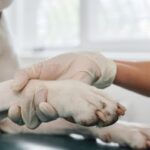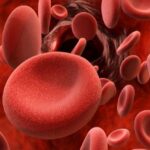The global challenge of needlestick injuries in healthcare
Needlestick injuries (NSIs) remain a global threat, with an estimated 44.5% of healthcare workers experiencing at least one occurrence annually.1
In Europe, steps have been taken to combat sharps injuries. The EU Directive 2010/32/EU has sparked greater conversation around implementing safer work environments and practices to help protect healthcare workers from NSI-related injury and infection.2
However, some regions are still discovering the gravity of needlestick injuries in healthcare. In the Kingdom of Saudi Arabia (KSA), studies of needlestick injuries in healthcare are few.3
To investigate the annual occurrence of sharps injuries and their risk factors in the KSA, a cross-sectional survey was conducted among 361 healthcare workers in hospitals and dental clinics across the region from October to November 2021.3
How do KSA numbers compare to those reported globally? With these numbers, can we better understand how to prevent a needlestick injury?
Learn more about the progress made in Europe since the legislation: 10 years of the EU Directive 2010/32/EU – Prevention of sharps injuries in the hospital and healthcare sector
How many needlestick injuries occur each year?
Every year, it is estimated that 385,000 healthcare workers in the United States and more than 1 million healthcare workers in Europe experience a percutaneous injury each year as a result of accidents with needles or sharps.4,5
Globally, approximately 3 million healthcare workers experience a sharps injury every year.4
In the KSA, 22.2% of survey respondents have experienced at least one sharps injury in the last year, with physicians (36%) and nurses (34.8%) ranking highest.3
34% of all sharps injuries documented in the survey were reported to have been contaminated with blood.3 Blood exposure can increase the transmission of harmful bloodborne pathogens such as the human immunodeficiency virus (HIV), hepatitis B (HBV) and hepatitis C (HCV).3
Globally, sharps injuries lead to 66,000 HBV, 16,000 HCV and up to 5,000 HIV infections among healthcare workers every year.6
Learn more about the risks of needlestick injuries in healthcare: Burdens of blood exposure and needle stick injury for healthcare workers – Awareness is key
Reporting a needlestick injury: Can we trust the numbers?
Reporting a needlestick injury remains globally unsystematic. According to the United States Centre for Disease Control, at least half of sharps injuries are not reported.5
One questionnaire among hospitals in the United Kingdom concluded out of 80 doctors who experienced a sharps injury, 30 did not report it to their occupational health department.7
In the KSA, underreporting is also a critical issue. More than half (53.8%) of the survey respondents who experienced a sharps injury did not notify authorities.3
Many factors influence whether or not a healthcare worker reports a sharps injury. The survey authors speculate that in the KSA, underreporting may be attributed to:3
- The assumption that no bloodborne pathogens existed in the source patient
- A lack of adherence to standard infection control precautions
- A lack of awareness of the reporting procedure
The survey also showed that most healthcare workers do not perceive their injuries as severe, which could also play a role in the non-reporting of a needlestick injury. According to the results, 70% of injuries were reported as mild with little to no bleeding.3
Learn more about how to improve needlestick injury reporting: Adapting needlestick injury awareness to your target audiences
How to prevent a needlestick injury
The survey authors called for new initiatives to help prevent sharps injuries in the KSA, including a unified policy covering safe work practices, safe sharps disposal, injury procedural guidelines (including reporting protocol) and preventative training.3
As well, the survey reported that the most common activities leading to needlestick injuries were using the device and recapping used needles.3 The implementation of safety-engineered devices designed specifically for sharps injury protection, could address this issue, as they have been proven to reduce needlestick injury rates.8
Learn more about how to prevent a needlestick injury: 3 keys to preventing needlestick injuries: locate, train, assess
References
- Bouya S, Balouchi A, Rafiemanesh H, et al. Global Prevalence and Device Related Causes of Needlestick Injuries among Healthcare Workers: A Systematic Review and Meta-Analysis. Ann Glob Health. 2020 Apr 6;86(1):35. doi: 10.5334/aogh.2698.
- European Agency for Safety and Health at Work. Directive 2010/32/EU – prevention from sharp injuries in the hospital and healthcare sector. Published 10 May 2010. Accessed 11 January 2023 at https://osha.europa.eu/en/legislation/directives/council-directive-2010-32-eu-prevention-from-sharp-injuries-in-the-hospital-and-healthcare-sector
- Abalkhail A, Kabir R, Elmosaad YM, et al. Needlestick and Sharp Injuries among Hospital Healthcare Workers in Saudi Arabia: A Cross-Sectional Survey. Int J Environ Res Public Health. 2022 May; 19(10): 6342. Epub 23 May 2022. doi: 10.3390/ijerph19106342
- Gabriel, Janice. Sharps injuries and their prevention: what the new European Legislation may mean for palliative care services. Int J Palliat Nurs. 2012 May;18(5):218, 220, 222-3. doi: 10.12968/ijpn.2012.18.5.218.
- Centre for Disease Control and Prevention (CDC). STOP STICKS CAMPAIGN–Sharps Injuries 2020. Published 26 February 2019. Accessed 12 December 2022 at https://www.cdc.gov/niosh/stopsticks/sharpsinjuries.html
- World Health Organization. Sharps injuries: Assessing the burden of disease from sharps injuries to healthcare workers at national and local levels. Published 7 July 2005. Accessed 11 January 2023 at https://www.who.int/publications/i/item/sharps-injuries-assessing-the-burden-of-disease-from-sharps-injuries-to-health-care-workers-at-national-and-local-levels
- Naghavi SH, Shabestari O, Alcolado J. Post-traumatic stress disorder in trainee doctors with previous needlestick injuries. Occupational medicine (Oxford, England). 2013;63(4):260-265. doi: 10.1093/occmed/kqt027.
- Tuma S, Sepkowitz KA. Efficacy of Safety-Engineered Device Implementation in the Prevention of Percutaneous Injuries: A Review of Published Studies. Clinical Infectious Diseases. 2006 Apr 15;42(8):1159-1170. https://doi.org/10.1086/501456
This list of references to third-party peer-reviewed material and the sites they are hosted on are provided for your reference and convenience only, and do not imply any review or endorsement of the material or any association with their operators. The Third-Party References (and the Web sites to which they link) may contain information that is inaccurate, incomplete, or outdated. Your access and use of the Third Party Sites (and any Web sites to which they link) is solely at your own risk.
BD-79608




